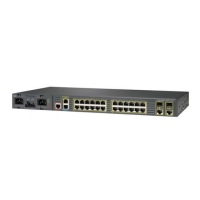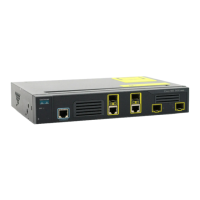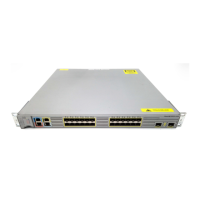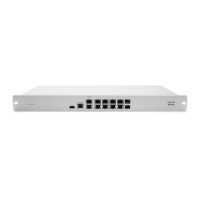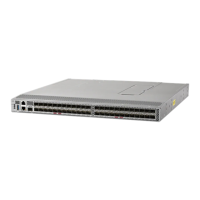13-8
Cisco ME 3400 Ethernet Access Switch Software Configuration Guide
OL-9639-07
Chapter 13 Configuring IEEE 802.1Q Tunneling and Layer 2 Protocol Tunneling
Understanding Layer 2 Protocol Tunneling
as normal packets. Layer 2 protocol data units (PDUs) for CDP, STP, or VTP cross the service-provider
network and are delivered to customer switches on the outbound side of the service-provider network.
Identical packets are received by all customer ports on the same VLANs with these results:
• Users on each of a customer’s sites can properly run STP, and every VLAN can build a correct
spanning tree based on parameters from all sites and not just from the local site.
• CDP discovers and shows information about the other Cisco devices connected through the
service-provider network.
• VTP provides consistent VLAN configuration throughout the customer network, propagating to all
switches through the service provider that support VTP.
Note To provide interoperability with third-party vendors, you can use the Layer 2 protocol-tunnel bypass
feature. Bypass mode transparently forwards control PDUs to vendor switches that have different ways
of controlling protocol tunneling. You implement bypass mode by enabling Layer 2 protocol tunneling
on the egress trunk port. When Layer 2 protocol tunneling is enabled on the trunk port, the encapsulated
tunnel MAC address is removed and the protocol packets have their normal MAC address.
Layer 2 protocol tunneling can be used independently or can enhance 802.1Q tunneling. If protocol
tunneling is not enabled on 802.1Q tunneling ports, remote switches at the receiving end of the
service-provider network do not receive the PDUs and cannot properly run STP, CDP, and VTP. When
protocol tunneling is enabled, Layer 2 protocols within each customer’s network are totally separate
from those running within the service-provider network. Customer switches on different sites that send
traffic through the service-provider network with 802.1Q tunneling achieve complete knowledge of the
customer’s VLAN. If 802.1Q tunneling is not used, you can still enable Layer 2 protocol tunneling by
connecting to the customer switch through access or trunk ports and enabling tunneling on the
service-provider access or trunk port.
For example, in Figure 13-4, Customer X has four switches in the same VLAN, that are connected
through the service-provider network. If the network does not tunnel PDUs, switches on the far ends of
the network cannot properly run STP, CDP, and VTP. For example, STP for a VLAN on a switch in
Customer X, Site 1, will build a spanning tree on the switches at that site without considering
convergence parameters based on Customer X’s switch in Site 2. This could result in the topology shown
in
Figure 13-5.
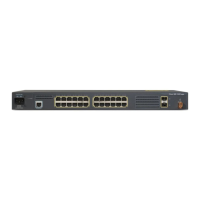
